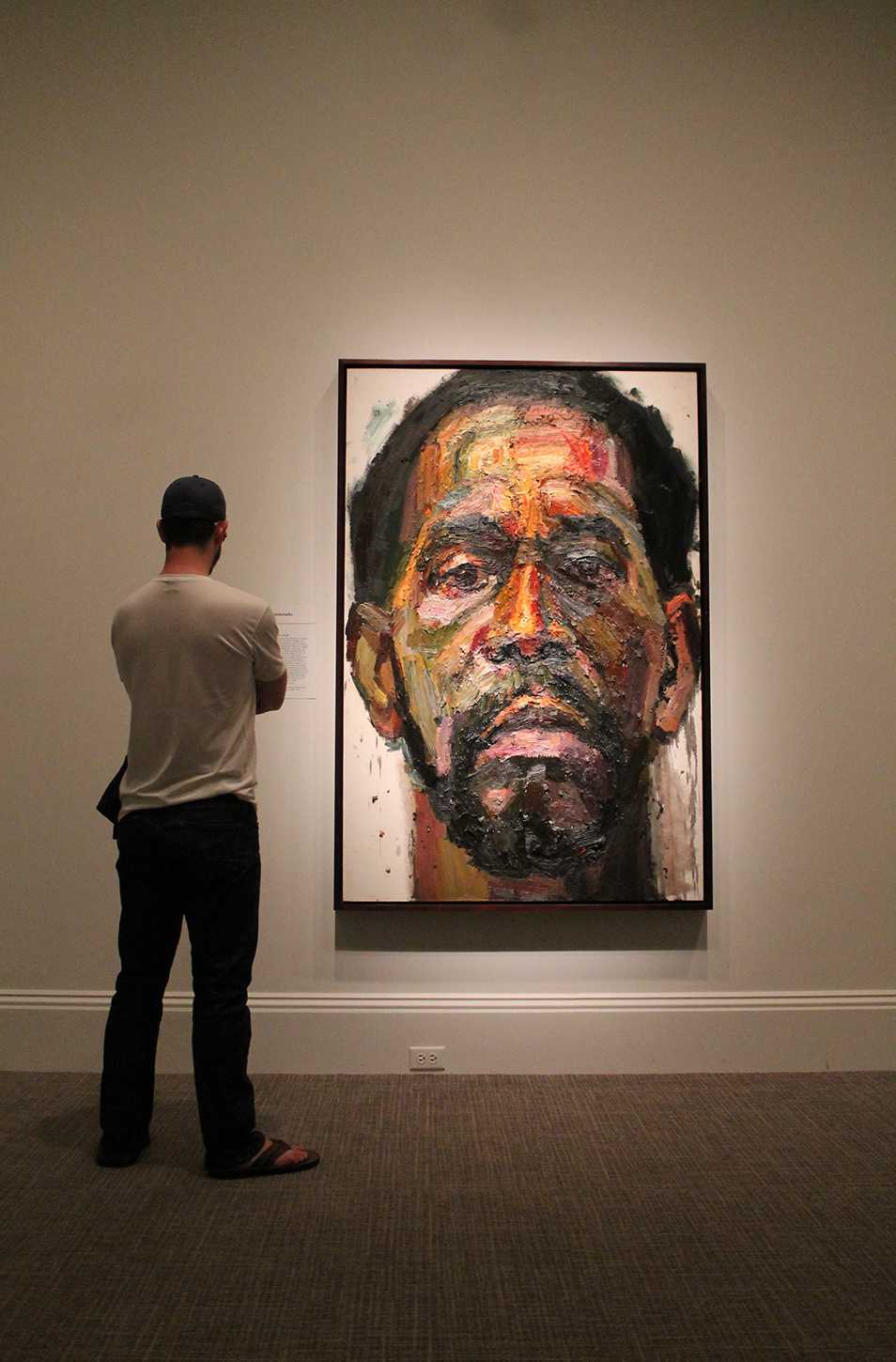Underneath Sedrick Huckaby’s strokes of impasto in his painted portraits, layers of history lie in the expressions of each subject and the thickness of the paint itself.
On Thursday, Boston University’s College of Fine Arts’ School of Visual Arts welcomed back Huckaby, a CFA ‘97 alum, to speak about his work as part of the Contemporary Perspectives Lecture Series.
The theme of the annual program is “Viewpoints,” which, according to a series brochure, “offers a broad analysis of life and society through the artist’s lens.” The speakers demonstrated how they interact with contemporary life through a range of artistic strategies, according to the brochure.
“This is a really important time for figure painting, not just in terms of diversity, but in terms of experiences and the sense of presenting other narratives,” said Dana Clancy, a CFA professor.
Huckaby said he uses his work as a form of storytelling that sheds light on an individual’s identity within the context of a community. The artist’s lecture addressed his stylistic evolution from his well-known figure paintings to large-scale projects, including an installation using his grandmother’s quilts.
The title of his lecture, “Look, Think & Respond,” embodies Huckaby’s approach to art that invites the audience to ponder their sense of personal history.
“Something that is important to me is that no matter the audience, there is a way in which the person can be able to look at and evaluate the work, and even in some kind of way identify with it,” Huckaby said in an interview.
In his lecture, Huckaby referenced everything from jazz singers to the movie “Ratatouille” to describe his creative process. He said that jazz singers “could play the same song each night, but each night they make that song different by putting spontaneous reactions to the music,” and he said he thinks, “artists do the same thing.”
Huckaby said that he hopes his work can make his audiences “more aware of [their] humanness.” Many of his pieces tie together the subjects of race, religion, history and various social issues with the themes of hope, loss and rejuvenation, according to Huckaby.
Huckaby has recently created large-scale projects embracing the concept of community and the individuals occupying these shared spaces. He mentioned this type of visual storytelling could be seen through his past exhibition “The 99%,” which he began working on in 2012, that ran at the Steven Harvey Fine Arts Projects gallery in New York City.
“The 99%” featured paintings, drawings, sculptures and 101 lithographs documenting people from his predominately African-American neighborhood. Each lithograph included handwritten quotes from his conversations with these individuals, which gives each of them character beyond their image.
“I like the fact that he is representing everyone in multiple ways,” said Kayla Arias, a CFA graduate student. “It not only gives people these voices, but it recontextualizes it further. [Huckaby] is learning who people are and then giving them that platform to show their story.”
Currently, Huckaby said he is working on a project that combines large-scale portraits with sculpture, as well as a collection of bird cages, which are a metaphor for incarceration in America.
Elaborating on the cages, Huckaby said, “birds are meant to fly, and people are too.”
The project is being installed in his late grandmother’s emptied house. Although death and loss seem to be running themes in his work, Huckaby said he aims to use his paintings and other pieces to fill spaces with life and love.
Huckaby said he hopes anyone who encounters his works feels “a sense of empathy, a sense of identifying with another person and a sense of awe for the grandness of things.” His work ties into the lecture series’ theme to investigate how humans relate to the social spaces found in contemporary life.
“It’s about a kind of love that operates from a larger, godly perspective down into the love that a person might have [for] another person,” Huckaby said, “and having that sense of awe and respect for that greater love.”
Featured image courtesy of Flickr user Elvert Barnes























































































































